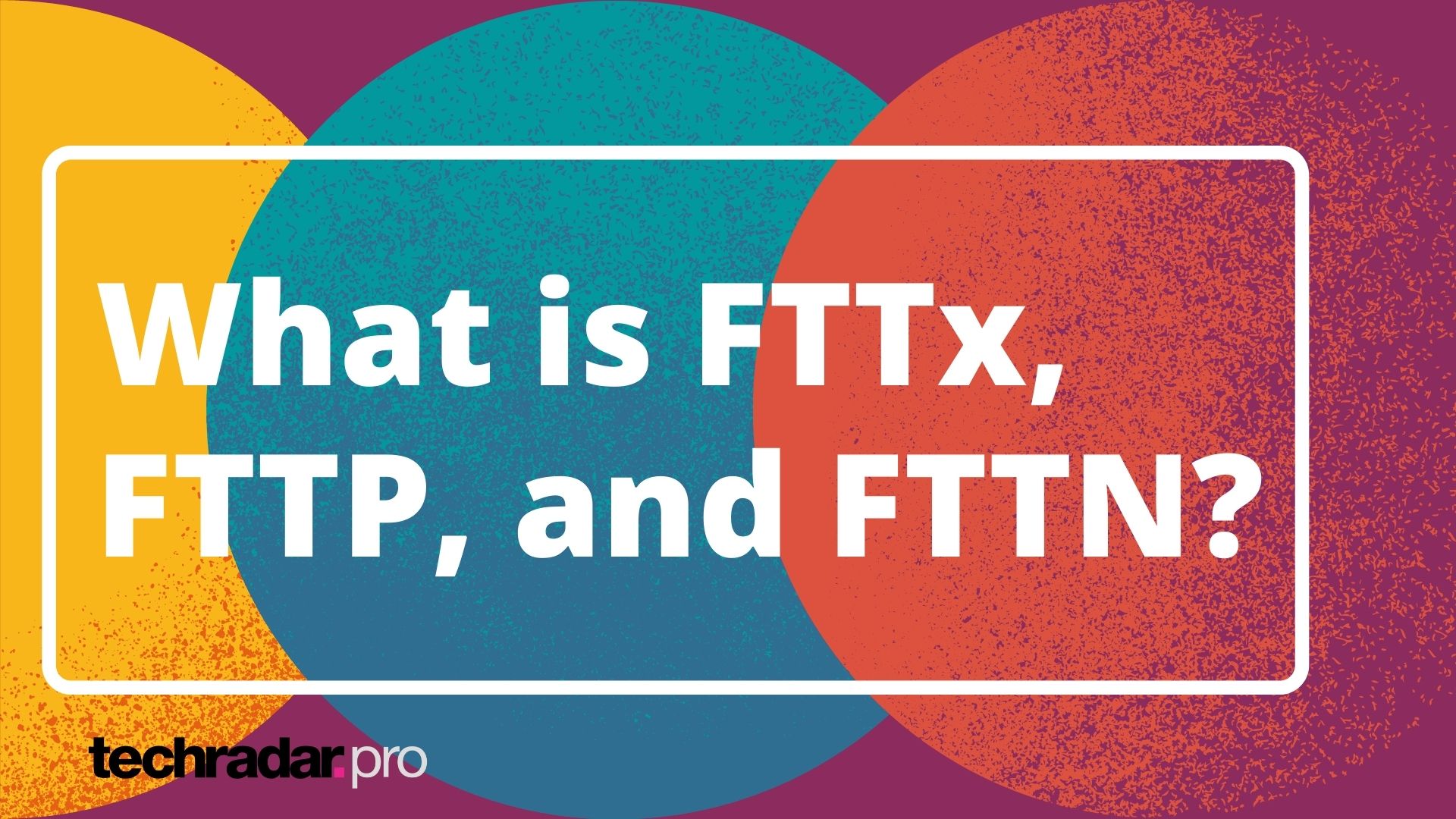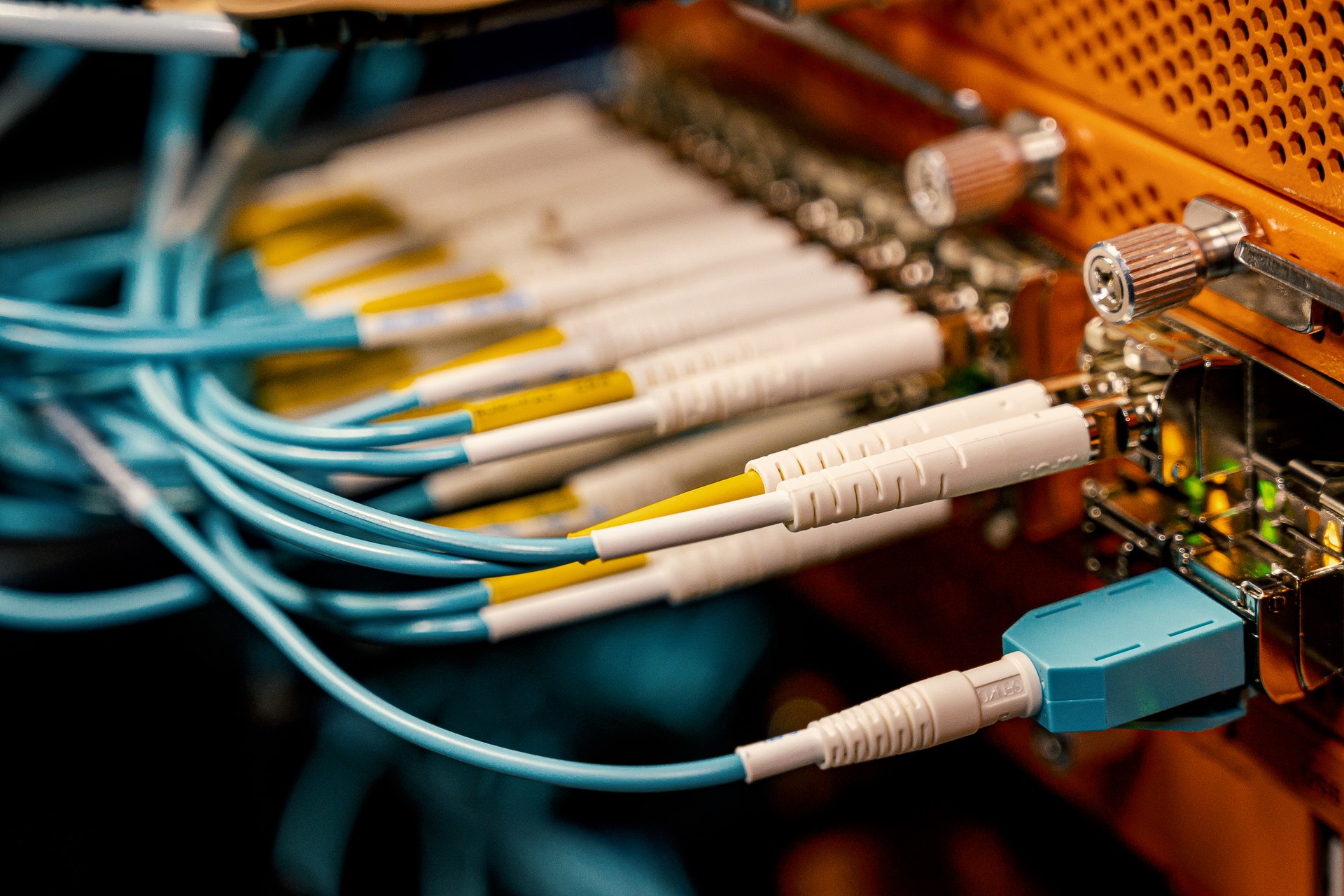What is FTTx, FTTP, and FTTN?
Ever wondered what FTTX is? Perhaps you’ve recently come across FTTH and FTTC too. We explain all about the world of fiber broadband,

What is FTTX and what are its variations?
First up, let’s clarify that FTTX itself appears in two formats: FTTX or FTTx. However, they both mean the same thing and that’s ‘Fiber to the X’, which is a collective term for all the various fiber delivery methods.
ADSL (or Asymmetric Digital Subscriber Line) is the more traditional, wired cable method of internet that uses electric signals. Fiber, on the other hand, uses light to transmit signals to the ‘X’ which represents a particular object, for example, a home or end-user premise.
FTTX is a central component of what’s called Next-Generation Access or NGA, which is the evolution of broadband infrastructure towards faster speeds and Quality of Service (QoS), something that’s obviously crucial with the increasing adoption of IoT, VoIP and even blockchain technology.
Tuesday morning, 9.10am
Paul, IT Director, ABC Company
“Morning James, how’s it going?
So, what’s our plan to fix this FTTX issue that’s affecting our VoIP service at the moment?”
James, IT Infrastructure Manager, ABC Company
“Morning Paul. Well, I spoke with our supplier and we seem to have two main options – either FTTP in the form of FTTB, or FTTC. We could go with FTTR but that would be quite a bit more expensive.”
Paul
Are you a pro? Subscribe to our newsletter
Sign up to the TechRadar Pro newsletter to get all the top news, opinion, features and guidance your business needs to succeed!
“Ok, well, as you know, our CEO is really keen to have the best of the best – is there anything available that would give us that?”
James
“The ultimate option is to actually build our very own FTTX network, but that might be a bit extreme for the size of the company right now.”
Paul
“Hmmm, right. Well, can you draw up the different options with pros and cons so we can present them to the ExCo? We really need to get this FTTP thing fixed ASAP.”
James
“Sure, I’ll have that ready by EOB.”
Sound familiar? We’ve probably all been subject to the ‘acronym conversation’ at work, and the world of FTTX is no different.
Don’t worry though as we’re here to sort the wheat from the chaff so to speak, or the fiber from the copper to use a more relevant analogy!
What are the benefits of FTTX?

Old copper-based networks are fast being replaced with FTTX all across the world, mainly because of speed and capacity issues. FTTX is essentially faster and can cope with a lot more traffic. It’s also able to transmit data at higher transmission rates and with more consistent connectivity, something we’re all more than happy to hear!

We've listed the best VoIP services and best VoIP headsets available for businesses to help give you a head start in your search.
Why not also take a look at our popular RingCentral VoIP services review or Nextiva vs RingCentral VoIP comparison? Or, if you're just starting out with VoIP learn the difference between VoIP and PBX.
On a more technical level, it not only provides long-distance signal transmission and immunity against electromagnetic interference, but it also operates at a lower overall energy consumption too. Again, music to many a business’ ear!
When it comes to ‘Fiber to the Home’ (FTTH) in particular, what’s essentially happening is that you’re moving fiber closer to the user, allowing for traffic bottlenecks to be almost eliminated. Some analysts even claim that the maintenance costs are much, much lower than for the copper network too – which makes the network suppliers happy as well.
What are the different types of FTTX?

The world of FTTX is fraught with acronyms, but they’re actually quite simple to get your head around.
FTTX architecture can be categorised into two main groups:
FTTP architecture and acronyms explained
FTTP
‘Fiber to the Premises’ (FTTP) is possibly the most common acronym of them all – not to be confused with its smaller cousin, ‘FTP’, which stands for something completely different, ‘File Transfer Protocol’.
FTTH
One of the forms of FTTP is FTTH – ‘Fiber to the Home’, where the cabling runs directly from the Internet Service Provider (ISP) to the individual home. With FTTH, fiber is essentially reaching all the way to the living space and is becoming increasingly used for your home broadband set-up.
FTTB
The business equivalent of FTTH is, of course, FTTB – ‘Fiber to the Building’, although this can also represent apartment buildings too. Here, the optical cable terminates at the building’s main communication room. Individual units within the building are then usually served via leveraging the existing wiring.
FTTR
FTTR – ‘Fiber to the Room’ – extends the FTTB set-up to overcome the physical limitations of the network cable. It uses what’s known as a ‘master and slave’ optical router and can deliver high-speed gigabit broadband directly to the users.
FTTC architecture and acronyms explained
FTTC
FTTC (‘Fiber to the Curb’ or ‘Fiber to the Cabinet’) represents the other main type of FTTX, as the cabling usually terminates within about a few hundred yards of the end premises.
FTTC is not strictly ‘fiber’ end-to-end as the fiber itself only runs to the curb or cabinet and then the more traditional copper ethernet cable connects from the curb to the final location. FTTC is similar to FTTN (coming next!), but fewer customers are served from each location.
FTTN
Lesser known is FTTN, or ‘Fiber to the Node’, often also called ‘Fiber to the Neighborhood’. Like FTTN, the optical fiber ends in a cabinet a few miles from the customer premises, with the remaining cabling being copper.
So, to recap, FTTX refers to all types of fiber infrastructure. FTTP goes all the way to the premises and includes FTTH, FTTB and FTTR. FTTC, which is very similar to FTTN, goes only partway, with copper cabling usually doing the rest.
How do you go about setting up an FTTX?

Unfortunately, there is no easy way to generalize about the installation process for FTTX, as every system is unique. It therefore has to be designed for the location it’s serving, with components and installation methods optimized accordingly. Your supplier is best placed to advise you on what systems are available and how or if they can be customized for enhanced speed and lower costs.
When it comes to FTTH, most of these networks are based on a Passive Optical Network (PON) and are made up of the following components:
- A ‘feeder’ cable.
- An Optical Line Terminal (OLT).
- A Central Office (CO).
- A Fiber Distribution Hub (FDH).
- An Optical Network Terminal (ONT).
Steps to set up an FTTX
1. Measure accurately.
We all know the old adage – ‘measure twice, cut once’! The same goes for fiber cabling. You’ll need to measure and record the full length of the system with a measuring wheel.
2. Adjust duct width.
Depending on how many fiber ‘feeder’ cables you have, you’ll then need to adjust your duct width accordingly.
3. Feed fiber cabling.
Once adjusted, you’ll need to roll the feeder fiber off the supply wheel and feed it into the duct.
4. Align and position.
Align the cabling outside the middle handholes in the shape of a figure eight.
Position your alignment markers in the center of the handholes and place any required slack back into the handhole itself.
5. Release and coil.
When you’re happy that the cable is properly aligned, release and coil the tether in the handhole.
6. Locate your terminal.
Position your ONT and select the terminal fiber count. Remove any dust caps and connect the tether to the terminal tail.
7. Place and accept.
Finally, place your terminal and slack in the handhole and you’re ready to accept drop cables for customer connections!
If you’re looking to go a step further and set up an FTTX network, then you’ll want to start with careful design and planning. Consideration needs to be given to the quantity and location of your users, the fiber distribution and access points, existing utilities, and the architectural elements such as the PON technologies to be included in the design.
Detailed architectural designs then need to be drawn up to account for splice locations, precise distribution patterns and loss budget calculations. Incorrect splicing, contaminated connectors or microbends can lead to optical loss and decreased QoS. A construction certification plan implemented with Test Process Automation can help to mitigate these risks.
Final thoughts

You may also find these articles helpful:
What is VoIP Quality of Service (QoS)
FTTC vs FTTP: What’s the difference?
What is broadband and how does it work?
It's not difficult to see why high-bandwidth fiber networks have become the media of choice for both suppliers and users.
Increased internet usage and systems such as IoT and VoIP are driving an ever-increasing requirement for fast, reliable communications and FTTX provides the infrastructure that’s so sorely needed.
Extending the reach of that fiber network to premises and even rooms themselves serves up additional benefits of long-distance signal transmission and consistent connectivity – things that in today’s world can make or break a business and even entire economies.
Emma is an experienced technology writer covering everything from Point of Sale (POS) systems to Voice over Internet Protocol (VoIP) business phone systems. As well as Techradar, she has written for IT Builder, Soldo, and CArd Payment Guru.